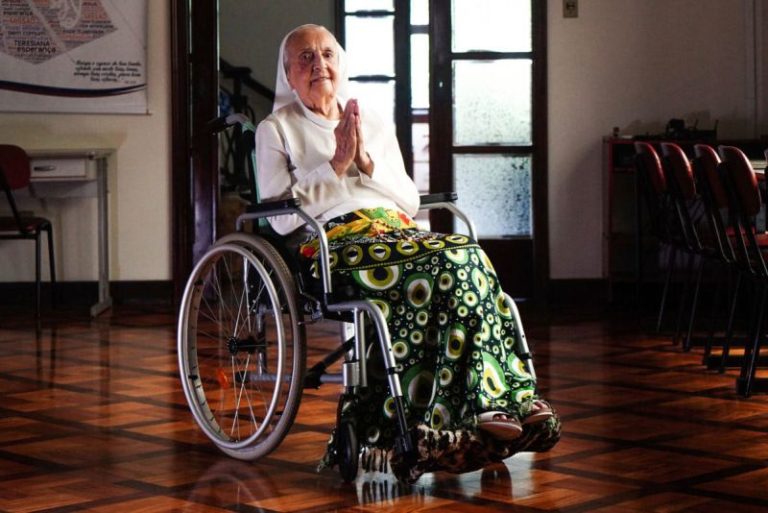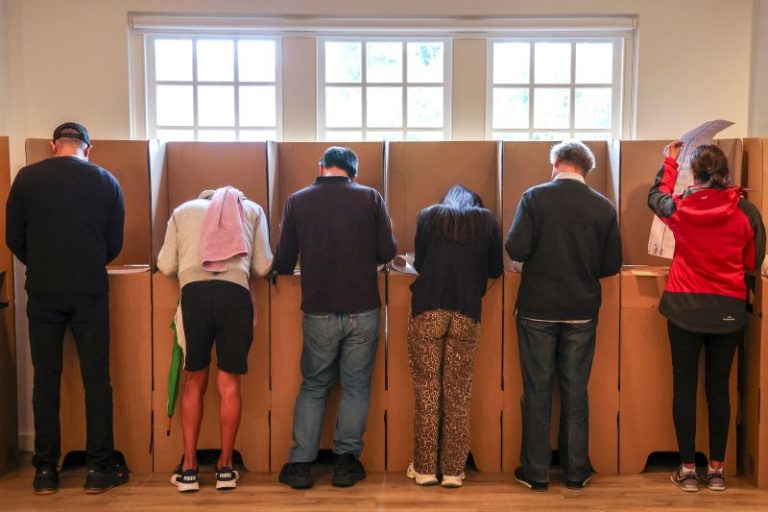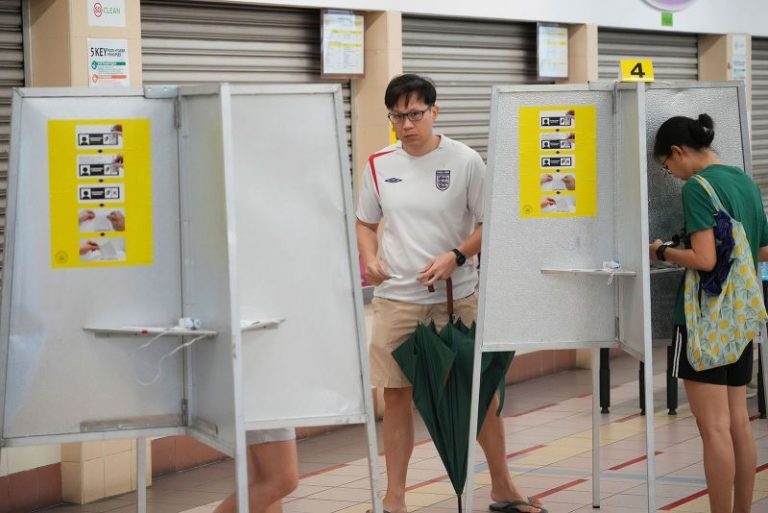The man sitting in front of us belongs to the Sinaloa Cartel — one of the most powerful and feared criminal networks in the world — and one the US government recently designated a foreign terrorist organization.
This is a gang that “murder, rape, torture and exercise total control… posing a great threat to (the United States’) national security,” according to US President Donald Trump, who has promised to “wage war” against Mexico’s cartels.
It’s taken weeks to reach this man, verify his identity, and persuade him to talk with us. Our contact on the ground here in the Mexican state of Sinaloa has repeatedly reassured him we are not the police. Or DEA agents. Or the CIA.
We arrive at a nondescript house in a residential area on the southern side of Culiacán city and are instructed to cover our camera on the way in. It’s a neighborhood that’s known to be populated by cartels. Once inside, we’re taken to a dimly lit bedroom at the back of the house. A giant painting of Jesus Christ is nailed to the wall, above a rusty looking bed caked in dust. An older, beefy man stands by the window, holding a walkie-talkie close to his ear and anxiously glancing up and down the street where cars and military vehicles pass by.
The cartel member — now a terrorist in the eyes of the US government — sits in one corner of the room. He has a firm handshake and a hefty build. He wears a “Joker” movie baseball cap pulled down over his head, a scarf wrapped tightly around his face, sunglasses to disguise his eyes, and blue latex gloves to cover the tattoos on his hands. Propped up by his chair is an assault rifle. Next to that are two more walkie-talkies, from which cartel look-outs provide a constant stream of feedback on the movements of the Mexican military.
He says he produces fentanyl — the synthetic opioid that has become the most common drug involved in overdose deaths in the United States.
“Of course, of course, things are sad,” says the man, who didn’t give his real name. “(But) you have to continue… Families have to eat,” he shrugs.
For nearly two decades, Mexican authorities have been waging a battle against the cartels, with limited results. And for over five decades, various US presidents have declared wars on drugs. But amid fresh waves of cartel violence and pressure from Trump in the form of threatened US military intervention and higher import tariffs, President Claudia Sheinbaum has adopted a more head-on approach to tackling the issue. (Her predecessor Andrés Manuel López Obrador’s “hugs, not bullets” stance proved woefully ineffective.)
Around 10,000 members of Mexico’s National Guard have been sent to their northern border, in part to stop the flow of narcotics from entering the US. And hundreds of soldiers are believed to have joined preexisting armed forces, marines, National Guards and law enforcement already stationed in Sinaloa state, home to the infamous Sinaloa drug cartel previously led by the notorious drug lord Joaquín “El Chapo” Guzmán.
The precursor chemicals used to make fentanyl are largely sourced from China, before being cooked up in labs across Mexico, where cartels have well-established control over entire territories — and relatively easy access to the US market. (The Mexican government denies that fentanyl is produced in country, claiming instead that most of the synthetic labs they discover are being used to make methamphetamine.)
Business these days is not good, the cartel member says, acknowledging that the Sinaloa Cartel itself has been significantly weakened by the military’s actions. But they can still survive. Only small quantities of the drug can be produced, he explains, as the group needs to stay nimble in case the authorities carry out impromptu raids.
Using smaller reactors and cooking equipment allows them to dismantle their operation at a moment’s notice, and to smuggle these manageable quantities of drugs through different neighborhoods — and eventually over the border. Sometimes they move location for different stages of production, ensuring they’re only in one area for a short period of time. The cartels are also pouring additional resources into surveillance to keep tabs on the police and military. And much of the production has moved to other states, where the Mexican military has less of a presence.
Crammed into a Blackhawk helicopter with the Mexican military, the challenges of disrupting the drug trade can be seen in the sprawling landscape below.
Sinaloa state stretches out for over 22,000 square miles, and the soldiers scour the mountainous terrain beneath them for any signs of tracks, electrical wires or water supplies that could lead to a hideout where drugs are produced. Given that these operations have mostly moved out of the city and are now tucked away somewhere in this vast countryside, they’re much harder to spot.
Fields of marijuana and poppies (used to make heroin) are more visible, but the synthetic drug labs can pop up anywhere and often require only rudimentary equipment: pots, pans, basic protective gear to stop the workers from breathing in toxic fumes, plastic vats where the chemicals are mixed, small reactors used to “cook” the final product and a sheet of tarpaulin that hangs above, so their operation is not visible from the military’s helicopters or drones.
On a visit to one recently discovered meth lab, it was apparent that a small team of cartel employees had been working here up until the day before. The military rarely catch the culprits, who likely scarper as soon as they see the helicopter landing. Left behind are parts of a reactor and big plastic containers of liquid meth, along with piles of perishable food, water and even a pair of jeans — signs that they’d been camped up in this area for several days.
Mexican soldiers wearing gas masks and white Hazmat suits smash through the remaining equipment in sweltering 96-degree Fahrenheit heat, stopping occasionally to mop up sweat pouring from their faces.
A sign was nailed to a post at the entrance of the lab. It read “To make a deal: Cell phone”: an open invitation for any willing soldier to write their phone number and look the other way, presumably in exchange for a payout.
“This literally never happens,” insists Brigadier General Porfirio Fuentes Vélez. “I see the government’s commitment in addressing (the issue of drugs). We know it’s a very serious problem because there’s a market that demands a lot of synthetic drugs. But criminals are increasingly producing less… because the strategy of the current Mexican president is to strengthen the coordination of all agencies at the federal, state, and municipal levels.”
But off the record, almost everyone we speak to acknowledges that corruption is widespread. In fact, the security chief who oversaw a previous crackdown was later convicted in US federal court for taking millions of dollars from the Sinaloa cartel.
Rosalinda Cabanillas lets out a guttural wail that echoes across the entire cemetery. The sound of pain that no mother should have to go through. She clings to the white casket carrying her 26-year-old daughter, Vivian Karely Aispuro, whose body was found 17 agonizing days after she disappeared.
“Thank you for the great adventure. Thank you for everything,” sobs 27-year-old Alma Aispuro, as her younger sister’s body is lowered into the ground. A bright, five-piece mariachi band blast out their tunes in a constant loop.
Over the last seven months, violence has surged across Sinaloa, particularly in Culiacán. The city has become awash with blood, as rival factions of the Sinaloa cartel fight a deadly war of vengeance. Two powerful leaders of the Sinaloa cartel were arrested in Texas last July: Ismael Zambada Garcia (known as “El Mayo”, he’s a co-founder of the group) and Joaquín Guzmán López, son of El Chapo. Both stand accused of leading fentanyl manufacturing and trafficking networks. But Zambada was caught after an alleged betrayal by Guzmán López, officials say, driving their followers into opposing groups. (In the US, Zambada has pleaded not guilty on a 17-count indictment accusing him of narcotics trafficking and murder. Gúzman López has pleaded not guilty to narcotics, money laundering and firearms charges.)
Since then, Culiacán has become paralyzed by regular shootouts between the two factions, as well as the military. More than 1,200 men, women, and children have been killed in the past year, more than double the toll of the previous 12 months, according to the State Council of Public Safety (a citizens’ organization). Hundreds more have gone missing.
Though the military’s presence has helped calm the situation somewhat, it’s far from under control, and fear runs deep among many residents. Attendance at local schools is down, and children are taught how to take cover in case they find themselves trapped between gunfire. As night falls, the usually vibrant city is eerily quiet — apart from the occasional sound of gunfire. A self-imposed curfew still mostly stands, with bars and restaurants closing early. Volunteer paramedics whizz round on motorbikes, responding to a stream of medical emergencies resulting from violent incidents.
Alma says that her sister Vivian was not involved with the cartels, and we found no evidence to suggest otherwise. “But the violence raging here in Culiacán led to this happening. Because before the war we’re experiencing now, there were codes — and women and children were respected. After the war, those codes no longer exist,” she says.
Anyone with even the slightest involvement with members of the cartel could be at risk. And even those who keep their distance, we were told by residents living through this, can find themselves taken hostage or murdered.
Miguel Calderón, who lives in Culiacán and works for the State Council on Public Security, believes that things could be even worse.
“That pressure (from the Trump administration) has translated into tangible results here, into better coordination that translates into all these issues of inhibiting criminal activity, especially its firepower… If it weren’t for federal forces and all this military support from the national government, the problem would be two or three times worse.”
Ultimately, though, he believes it’s difficult to maintain this pressure when so many young men are being recruited into the cartel every day, with promises of paychecks far bigger than they’d receive otherwise. He says that something needs to be done to seriously curb the US demand for the drugs produced here. Without that, the Sinaloa cartel are likely to remain a prominent, wealthy force — and more families will feel anguish like that of Vivian Aispuro’s family.
“After my sister, that same day we found her dead, five women disappeared, including girls and others the same age as my sister. And we’re afraid, honestly, I’m afraid. I’m afraid for my family. I’m afraid to be a woman in Mexico, and I’m afraid that no one will help us, no one will listen to us, and that no one cares about us,” says Alma, as she watches the gravediggers shovel dirt over her sister’s grave.
This post appeared first on cnn.com










